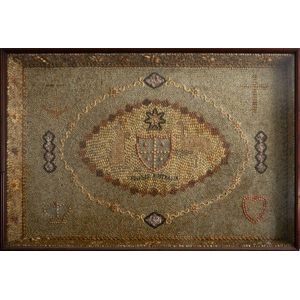1862 UK Exhibition Bronze Medal with Classical Scene
You must be a subscriber, and be logged in to view price and dealer details.
Subscribe Now to view actual auction price for this item
When you subscribe, you have the option of setting the currency in which to display prices to $Au, $US, $NZ or Stg.
- Victorian Period - The Victorian period of furniture and decorative arts design covers the reign of Queen Victoria from 1837 to 1901. There was not one dominant style of furniture in the Victorian period. Designers used and modified many historical styles such as Gothic, Tudor, Elizabethan, English Rococo, Neoclassical and others, although use of some styles, such as English Rococo and Gothic tended to dominate the furniture manufacture of the period.
The Victorian period was preceded by the Regency and William IV periods, and followed by the Edwardian period, named for Edward VII (1841 ? 1910) who was King of the United Kingdom and the British Dominions and Emperor of India for the brief period from 1901 until his death in 1910. - Embossed / Repousse - Embossing, also known as repousse, is the technique of decorating metal with raised designs, by pressing or beating out the design from the reverse side of the object.It is the opposite of chasing, where the decoration is applied from the front. An embossed or repoussed object may have chasing applied to finish off the design.
- Bronze - An alloy of copper and tin, traditionally in the proportions of about 9 parts of copper to 1 part of tin.
The discovery of bronze in Western Asia in the 4th century enabled people to create metal objects which were superior to those previoulsy possible because of its strength and hardness, and it has been used throughout the world for weapons, coins, tools, statuary and other decorative items.
It is very fluid in a molten state, and its hardness, strength when set, and non-corrosive properties makes it most suitable for casting sculpture.
This item has been included into following indexes:
Visually similar items

Forrest, John 'Explorations in Australia?' (London, Sampson Low, 1875)., Octavo, eight plates, four folding maps, in original green cloth, gilt vignette on upper board. An important account of Forrest's successful exploring career, during which he most fam

Impressive armorial shellwork picture, 19th century, depicting Australian coat of arms, framed, 67 x 97 cm. Provenance: collection of David Ell, Sydney. Collection of George and Adisa Pompei, Sydney

Pair of framed Wedgwood plaques of Samuel Johnem and Lord Nelson

Edward VII sterling silver calling card case allover embossed floral and scroll decoration, Chester, 1903, maker, William Neale, in original velvet lined black morocco case
